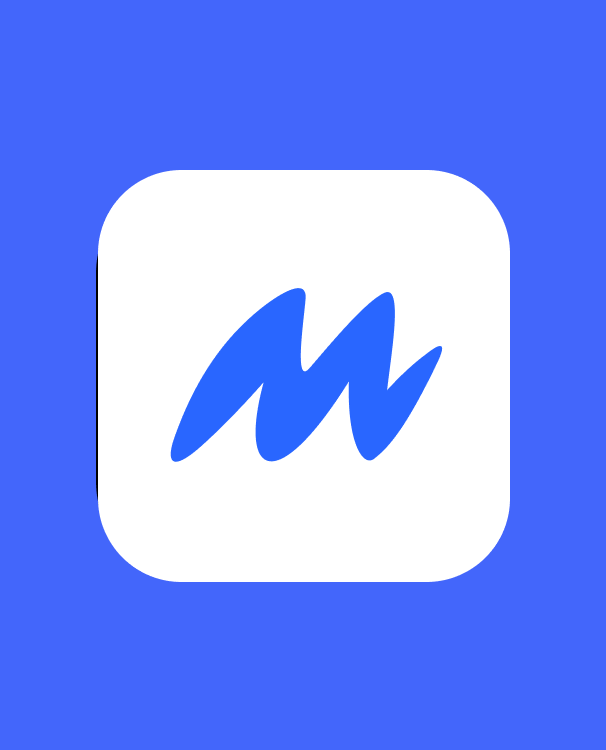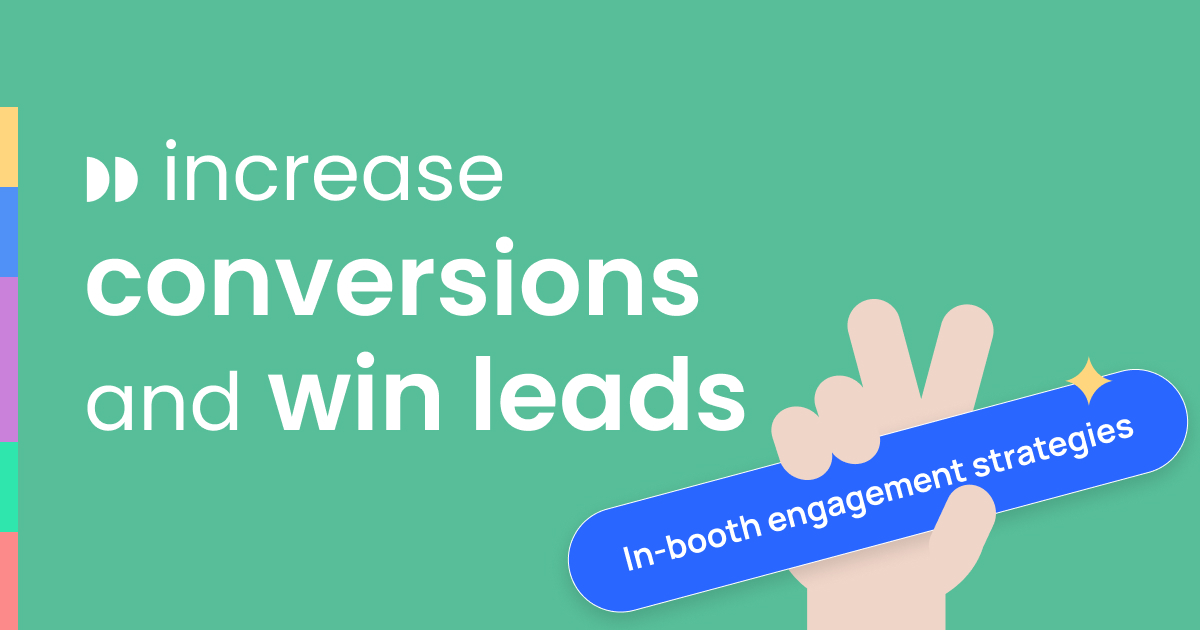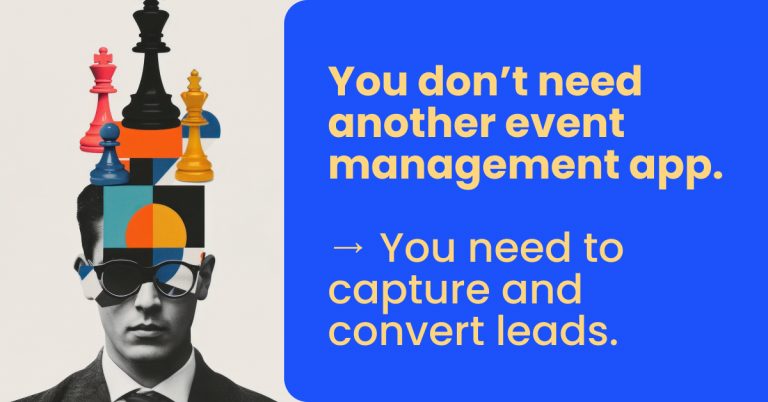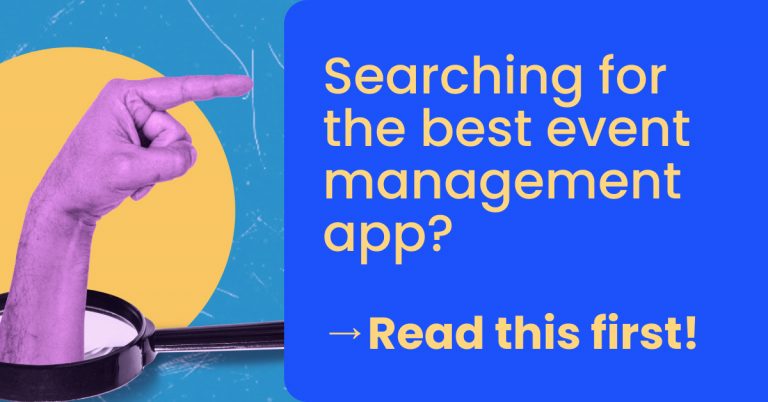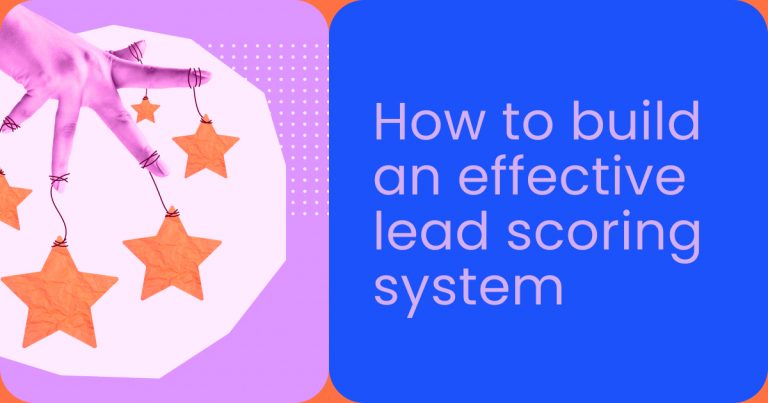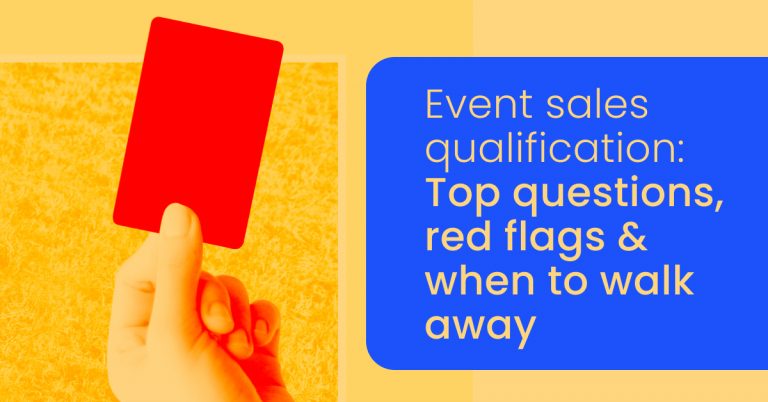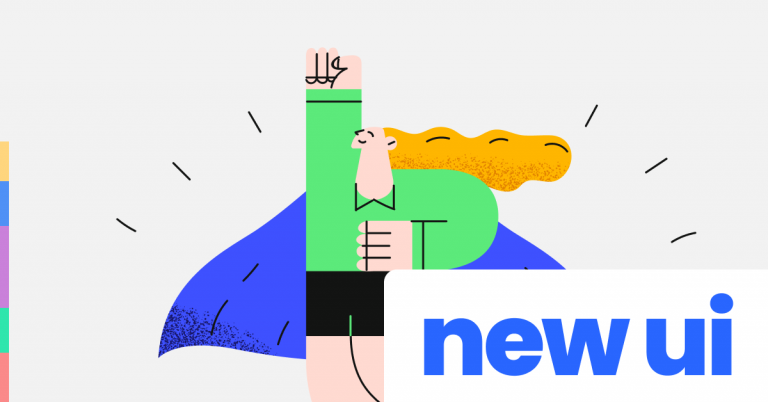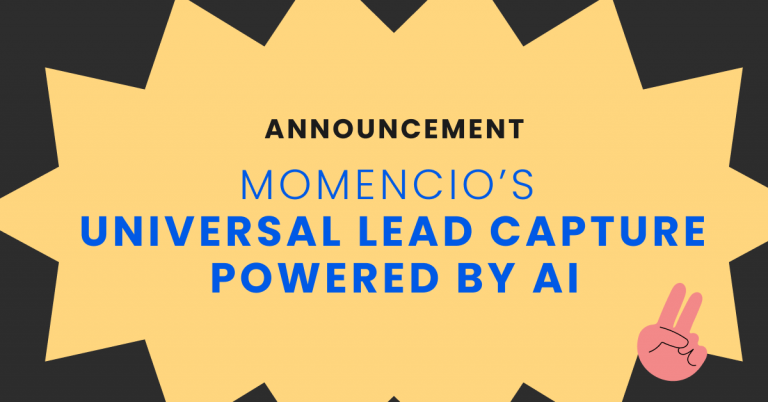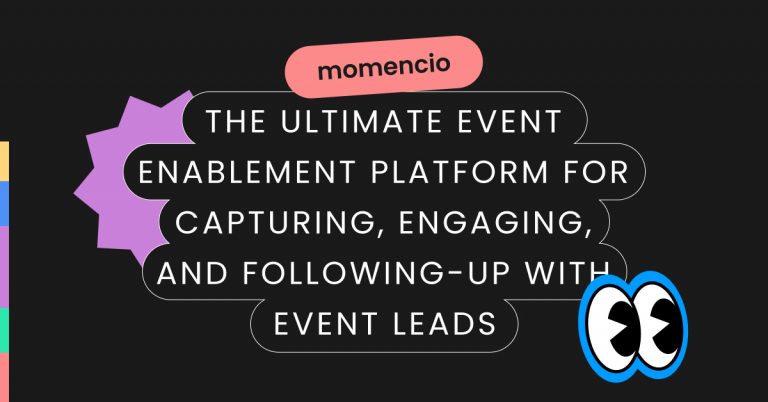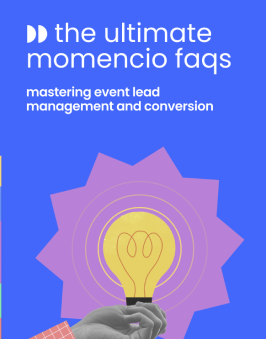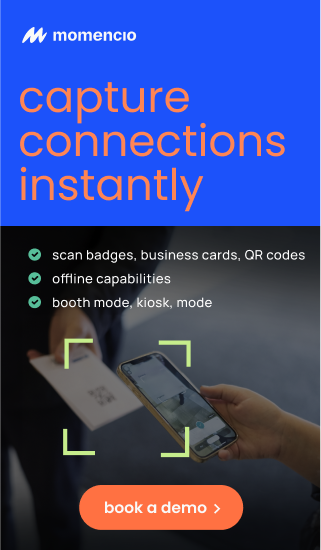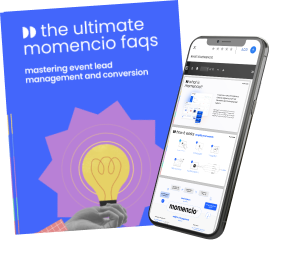The stakes at trade shows and events are high and the challenge is not attracting attendees to your booth, it’s what happens once they are there. Effective in-booth engagement strategies are what separate booths that gather leads from those that convert them. The truth is, most event marketers already know how to draw people in, but far fewer understand the subtle tactics that turn those interactions into sales conversations.
One cannot rely solely on giveaways or flashy displays anymore. Today’s attendees expect more – personalized, interactive experiences that speak directly to their needs.
Today we will dive into the less obvious but highly effective in-booth engagement strategies that are driving higher conversions at top events. We will go beyond the basics and explore how tools like real-time data capture, behavioral insights, and interactive content can shift your approach from merely engaging attendees to qualifying and nurturing them in real-time. These are the strategies that the best teams are using to turn foot traffic into meaningful business relationships and measurable ROI.
If your goal is to move beyond surface-level engagement and maximize conversions, it is time to rethink your booth experience. Let us explore how you can transform your next event into a true sales engine with these proven strategies.
Understanding the attendee journey: how to engage from start to finish
To implement effective in-booth engagement strategies, you need to map out the attendee journey from the moment they set foot on the show floor to the time they leave. Many exhibitors make the mistake of thinking engagement starts when attendees enter their booth, but the truth is, your relationship with potential leads begins long before that.
Build anticipation much before the event
The journey starts well before the event. Targeted pre-show marketing efforts are critical for getting on attendees’ radars early. Utilizing personalized email outreach, social media campaigns, and event apps, you can create awareness and even schedule appointments ahead of time. Over 76% of top-performing exhibitors send personalized invites to key prospects before the event, ensuring their booth is on the “must-visit” list.
These initial touchpoints should hint at what your booth experience will offer. Whether it is an interactive demo, an exclusive product reveal, or even a networking opportunity, give attendees a reason to engage with your booth in advance.
It’s showtime!
When the event begins, in-booth engagement strategies kick into high gear. Visual appeal and booth design matter, but it is the experience that counts. You need to engage attendees as soon as they approach, whether through personalized greetings or quick scanning technology that identifies VIPs and key prospects. Use digital tools like touch screens, virtual product demos, or even AI-driven interactions to engage attendees immediately and gather data without overwhelming them.
Understanding the psychological motivations of your audience is key here. Attendees are pressed for time and are likely overwhelmed by the event’s offerings, so your booth needs to be immediately clear about how you can solve their problems. Lead with benefits, not features, and make sure staff are well-versed in guiding attendees through a smooth, structured experience that feels personal.
Prepare to engage – real-time qualification and data capture
What many marketers miss is that the middle of the booth experience is where in-booth engagement strategies have the most impact. Beyond flashy displays, your team must focus on real-time lead qualification. This means using advanced lead capture tools that do more than just scan badges. You need to gather behavioral data—track which demos they interact with, what questions they ask, and how long they spend on each product or service.
Incorporating tools like interactive quizzes or personalized content platforms can make a significant difference here. These tools allow you to deliver tailored content based on the prospect’s behavior in real-time. Attendees want to feel like their time matters. Offering a seamless way for them to get personalized information, rather than generic brochures, creates an instant connection and sets up more meaningful follow-ups later.
Maximizing booth interaction with technology
You want to create an experience that stays with them even after the event, right? Embrace technology. New-age technology is now a cornerstone of in-booth engagement strategies. But it is not just about having the latest gadgets or apps – it is about using technology to create personalized, memorable experiences that drive conversion.
VR and AR
These immersive technologies are no longer just novelties. They are highly effective at drawing attention and delivering complex product information in a more digestible format. For instance, VR product tours can give attendees a firsthand look at your offerings without needing to touch physical products. This is especially useful for companies showcasing large machinery, architectural designs, or complex software solutions that are difficult to demonstrate on-site. According to recent reports, booths that feature VR or AR experiences see up to 40% higher engagement rates compared to traditional setups.
AR can also be used for interactive product demos that overlay digital information onto real-world items, allowing attendees to explore features and benefits in a hands-on way. The key to using these technologies effectively is relevance. Attendees need to see the direct value of the experience, so make sure your VR or AR content directly addresses their pain points or challenges.
Touch screens and interactive displays
Gone are the days when static screens or printed brochures were enough to impress. It is not uncommon to see touch screens or interactive displays at events, offering a personalized experience to attendees. You can showcase tailored content, product demos, and case studies based on attendee preferences.
Watch how momencio helped Ashland build an interactive experience to create a truly engaging and memorable booth experience.
Interactive touchscreens can allow attendees to input their industry or specific needs, delivering customized solutions on the spot. Moreover, these tools enable you to capture data as the attendee interacts, providing insights into their preferences and behavior, which can be crucial for follow-ups. When combined with real-time analytics, you can immediately score leads based on engagement level, prioritizing those who spend more time on high-value content.
8 In-booth engagement ideas to boost conversions
Sometimes, simple but innovative ideas can dramatically improve booth engagement and lead generation. To help you stand out from the crowd at your next trade show or conference, here are 10 practical in-booth engagement strategies that are proven to capture attention and drive conversions:
-
Interactive Product demos
Nothing beats hands-on experience. Allow attendees to interact directly with your products or services through interactive demos. Whether it is a software interface, a piece of machinery, or a virtual demo of your service, giving attendees a tactile experience makes your booth more memorable. For example, using touchscreens or tablets for product walkthroughs gives attendees control and personalizes the engagement.
-
Gamification
Incorporating games is an excellent way to make your booth fun and interactive. You can host quizzes, spin-to-win contests, or scavenger hunts. Gamification not only increases booth traffic but also encourages attendees to stay longer and engage more deeply with your brand. Rewards such as exclusive content, prizes, or discounts for winners keep visitors motivated.
-
VR experiences
VR is one of the most engaging in-booth engagement strategies you can use. It allows attendees to immerse themselves in your product or service in a way that traditional methods cannot. For example, if you are a real estate developer, a VR tour of a property can give potential clients a first-hand experience without leaving the event.
-
Live polls and surveys
Use live polls or real-time surveys to capture attendee feedback and opinions. This can be a powerful way to engage visitors while gathering valuable data. Displaying live results on a screen at your booth also draws interest from passersby and encourages them to join the conversation.
-
Interactive presentations
Instead of the usual sales pitch, offer short, interactive presentations that provide value to attendees. You can schedule mini-sessions throughout the day on relevant topics, allowing participants to actively engage through Q&A, polls, or hands-on activities. This positions your brand as an authority while fostering real-time interaction.
-
Personalized digital content
Instead of giving out brochures, use digital kiosks or tablets to offer personalized content. Attendees can input their industry or challenges, and the system provides custom solutions, case studies, or product demos tailored to their needs. This not only creates a more meaningful experience but also allows you to capture valuable data about their preferences.
-
Exclusive event-only offers
Create urgency by offering special deals or discounts that are only available to attendees at the event. Promote these offers through banners, digital displays, and one-on-one conversations. Limited-time offers encourage decision-making and are a great motivator for lead capture.
-
Influencer or VIP appearances
Partner with influencers or industry experts who can draw a crowd. Host meet-and-greets, autograph sessions, or live interviews with them at your booth. This tactic not only attracts more attendees but also builds credibility for your brand. Influencers often share their experience with your booth on social media, amplifying your reach.
The power of gamification in booth engagement
Gamification is one of the most effective in-booth engagement strategies when done correctly. It not only increases booth traffic but also encourages deeper participation, especially for attendees who may otherwise engage passively.
Why gamification works
Event gamification taps into basic human psychology – competition, achievement, and rewards. When attendees are incentivized to participate through games or challenges, they are more likely to spend time in your booth and engage with your content.
The key to successful gamification is relevance and simplicity. Complex games that take too much time or require high effort will deter attendees. Focus on quick, engaging games that can be completed in a few minutes and tie them to your value proposition.
Successful gamification tactics
A simple but effective approach is to create a scavenger hunt that encourages attendees to explore different sections of your booth. As they engage with different touchpoints—whether it is interacting with a product demo, watching a presentation, or participating in a Q&A – they collect points or rewards. These points can be exchanged for exclusive content, discounts, or direct consultations with your team.
Another successful tactic is offering trivia or quiz-based games where attendees answer questions related to your industry or product. Not only does this engage attendees, but it also subtly educates them about your offerings. The more knowledgeable they become, the more likely they are to see the value in your solutions.
Remember, prizes do not have to be extravagant. In fact, studies show that attendees value experiences and recognition over high-value items. Offering exclusive access to insights, free trials, or a VIP consultation can be far more valuable than generic giveaways.
Effective lead capture: Real-time data and personalization
A critical element of successful in-booth engagement strategies is how you capture and use attendee data. Real-time data collection not only enhances the experience during the event but also gives you a competitive edge when it comes to post-event follow-up. The days of collecting business cards or using static badge scans are over—today’s top exhibitors use sophisticated tools to gather actionable insights as interactions happen.
Moving beyond basic lead capture
Traditional lead capture methods often focus solely on collecting contact information. While this is essential, you can take it much further. Modern lead retrieval tools allow you to capture attendee behavior, preferences, and specific interests in real-time, giving you valuable insights before the attendee even leaves your booth.
For example, if an attendee interacts with a specific product demo, engages with a particular piece of content, or spends time asking questions, this behavior should be recorded immediately. Real-time lead scoring systems can assign values to these actions, allowing your sales team to prioritize follow-ups based on interest level.
Furthermore, by integrating your lead capture tool with your CRM system, you can ensure that all data collected is immediately accessible to your sales team. This eliminates any lag time between the event and your follow-up efforts, leading to more timely and relevant outreach. Studies show that companies who follow up with leads within 24 hours of engagement see a 60% higher response rate compared to those that delay contact.
Personalization in real-time
One of the most overlooked in-booth engagement strategies is the power of personalization. Attendees do not want to feel like just another name on a list—they want tailored interactions that address their specific needs and challenges. During the booth experience, you can use the data collected from initial interactions to personalize their journey in real-time.
For instance, if an attendee shows interest in a particular product line, your booth staff can pull up relevant case studies, product demos, or even initiate a tailored conversation about how that product solves their specific pain points. This is where technology can play a pivotal role. Interactive kiosks, tablets, and screens can display content that is customized based on the attendee’s engagement history, ensuring every touchpoint adds value to their experience.
The key to using data effectively is to ensure it is being captured and analyzed instantly. With real-time analytics, you can track what is working and adjust your approach on the fly. Whether it is redirecting attendees to more relevant content or adjusting your booth’s messaging to better align with the audience, these insights can help optimize engagement in the moment.
Making it seamless
To maximize your booth’s efficiency, the process of capturing and utilizing data needs to be seamless. This means that every interaction, whether it is through a product demo, survey, or casual conversation, should feed into your system. Attendees should not feel like they are filling out lengthy forms or being bogged down by administrative processes.
Mobile badge scanners, lead retrieval apps, and even interactive apps that allow attendees to input their information on their own can create a smoother experience. Tools like badge scanners or digital check-ins capture contact data quickly, leaving your team free to focus on what matters most: meaningful conversations and qualifying leads based on their behaviors.
Turning engagement into conversions: Post-event strategies
Your in-booth engagement does not end when the event closes. The real value of your in-booth engagement strategies lies in how effectively you follow up and convert those engagements into sales. Research shows that the best-performing companies follow up with leads within 24 to 48 hours of initial interaction, tailoring their outreach based on the data they gathered during the event. Here’s how you can turn your booth engagements into long-term business relationships.
Immediate follow-up with personalized outreach
After the event, timing is everything. The longer you wait, the colder your leads become. With the detailed data you captured during the event, your sales team can create personalized follow-up strategies that address each attendee’s specific interests. Sending generic emails is no longer enough. Personalized microsites, custom presentations, and even personalized videos can be delivered based on the attendee’s behavior during the event.
For example, if an attendee engaged with a demo for a specific product, your follow-up email should not just mention the event—it should address their interaction with that demo, offer further insights, and include a call to action that reflects their interest. CRM-integrated email campaigns allow you to automate this process, ensuring timely, tailored outreach without burdening your team.
Leveraging data for segmentation
One of the most powerful ways to convert leads into sales is through proper segmentation. Not all leads are equal, and treating them the same way will diminish your chances of success. Use the data captured during the event to segment your leads into categories based on their engagement level, industry, or specific pain points.
By segmenting leads, you can create highly relevant follow-up campaigns. For example, high-priority leads who engaged deeply with multiple touchpoints in your booth should receive more immediate and direct follow-ups, perhaps even a phone call from a senior sales representative. Leads that showed more casual interest can be nurtured over time with educational content, case studies, and ongoing product updates.
Measuring success with data-driven insights
Once your post-event follow-up is underway, it is important to measure the success of your in-booth engagement strategies. Did your high-priority leads convert? Which touchpoints in the booth were the most engaging? What follow-up content resonated the most with your audience? These are questions you can answer by leveraging post-event analytics.
With CRM tools and integrated event management software, you can track which leads moved further down the sales funnel, what content drove conversions, and how well your in-booth engagement strategies aligned with your overall sales goals. Use these insights to refine your approach for future events, focusing on what worked and identifying areas where your engagement tactics can improve.
Conclusion
Mastering in-booth engagement strategies means more than just attracting visitors to your booth. It is about creating meaningful interactions that leave lasting impressions and ultimately convert those interactions into sales. By leveraging cutting-edge technology, real-time data capture, and personalized follow-ups, you can transform booth visitors into qualified leads that fuel your sales pipeline. As you prepare for your next event, consider how these strategies can be adapted to your unique audience and business goals.
If you are ready to take your event engagement to the next level, book a demo with momencio today and see how our platform can enhance every step of your booth engagement journey.
FAQs
- What are the key components of effective in-booth engagement strategies?
- Effective in-booth engagement strategies include pre-event planning, using interactive technologies, personalizing attendee interactions, and ensuring timely, relevant follow-up after the event. Real-time data capture and lead qualification tools also play a crucial role in optimizing engagement.
- How can I use gamification in my booth to drive engagement?
- Gamification increases booth interaction by encouraging competition and rewards. Simple activities like trivia, challenges, or point-based systems can encourage attendees to spend more time at your booth while subtly educating them about your products or services.
- What is the best way to capture leads during a trade show?
- Real-time lead capture tools such as mobile badge scanners, digital check-ins, and interactive kiosks are highly effective. These tools allow you to capture both contact information and behavioral data, which helps with lead qualification and personalized follow-up.
- How soon should I follow up with leads after an event?
- The best practice is to follow up within 24 to 48 hours of engagement. Personalized and timely outreach significantly increases the likelihood of conversion.
- What role does real-time data play in booth engagement?
- Real-time data provides immediate insights into attendee behavior and preferences. By capturing this data during the event, you can adjust your engagement tactics on the spot and prioritize leads for follow-up, leading to higher conversion rates.
